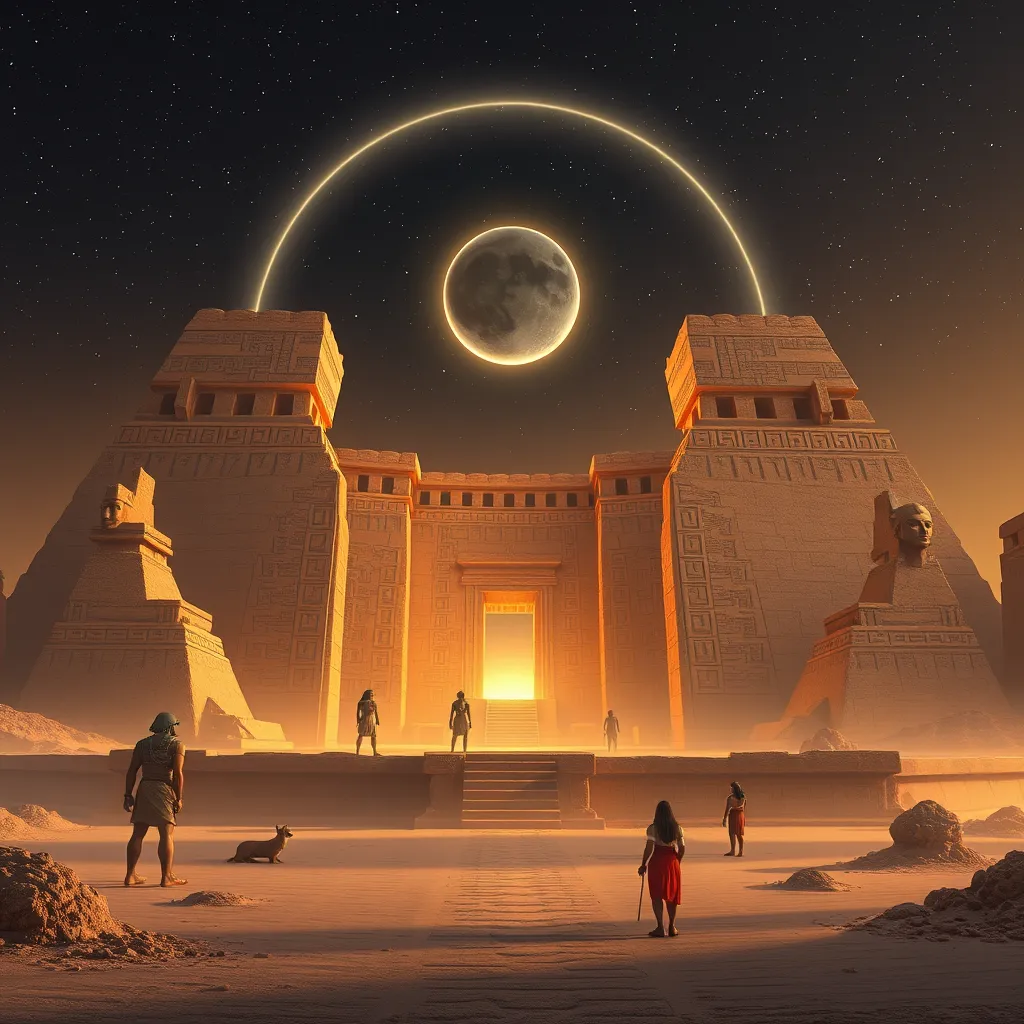The Duat: The Realm of Nut
I. Introduction
The Duat, in ancient Egyptian belief, refers to the realm of the dead, a mystical dimension where the souls of the deceased journey after death. It is a complex and often perilous landscape that embodies the transition from life to the afterlife. Central to this realm is Nut, the goddess of the sky, who plays a pivotal role in the cosmology of ancient Egypt.
Nut is depicted as a celestial figure, arched over the earth, represented by her brother Geb, the god of the earth. The importance of the Duat in the afterlife journey cannot be overstated; it is a place of judgment, rebirth, and transformation, where the soul must navigate various trials to achieve eternal life.
II. The Mythological Significance of Nut
Nut’s role in Egyptian cosmology is foundational. She is often seen as a protective mother figure, encompassing all that exists within her celestial body. Her relationship with Geb is deeply symbolic, as their union represents the balance between the heavens and the earth.
In many ancient texts and artistic depictions, Nut is shown as a woman covered in stars, her body bending over the earth. This imagery conveys her function as a shelter for the souls of the deceased, guiding them through the Duat. Common themes in her representation include:
- Her vast body as a protective canopy.
- The stars that adorn her form, symbolizing the souls of the departed.
- Her connection with the cycles of the moon, emphasizing rebirth and renewal.
III. Structure and Geography of the Duat
The Duat is often described as a vast, intricate landscape composed of various regions, each with its unique characteristics and challenges. The geography of the Duat is symbolic, reflecting the beliefs and values of ancient Egyptian culture.
Some notable regions within the Duat include:
- The Field of Reeds: A paradise where the righteous reside.
- The Lake of Fire: A place of punishment for the wicked.
- The Hall of Two Truths: The judgment area where the heart is weighed against the feather of Ma’at.
This structure serves as a reflection of the Egyptian underworld, illustrating the moral and ethical dimensions of their beliefs about life, death, and the afterlife.
IV. The Journey Through the Duat
The journey through the Duat is a critical aspect of the afterlife experience. The deceased, often depicted as a soul or a ba, must navigate this complex realm to achieve immortality. This journey involves various challenges and obstacles, such as:
- Confronting fearsome creatures, including serpents and demons.
- Overcoming dark waters that symbolize chaos and uncertainty.
- Passing through gates guarded by deities who test the soul’s worthiness.
Throughout this treacherous journey, guidance from deities and protective spirits is essential. Nut, as the goddess of the sky, plays a vital role in this navigation, offering her protective embrace to the souls traversing the Duat.
V. The Role of Nut in the Afterlife
Nut’s significance in the afterlife extends beyond her protective role. She is revered as a protector of souls, ensuring their safe passage through the Duat. This protection is vital, as the deceased must face various trials that test their worthiness.
Rituals and practices associated with Nut often involve:
- Prayers and offerings to seek her favor.
- Funerary practices that include depictions of Nut on coffins and tomb walls.
- Astrological observations that connect her with the cycles of life and death.
The significance of the night sky, with its stars and celestial bodies, is closely tied to Nut and the Duat. The stars are often seen as the souls of the departed, reinforcing the connection between the two realms.
VI. The Influence of the Duat on Egyptian Culture
The Duat is prominently featured in Egyptian literature and religious texts, serving as a critical backdrop for many myths and stories. It is a subject of fascination that reflects the beliefs and values of ancient Egyptian society.
Artistic representations of the Duat and Nut can be found in tomb paintings, sculptures, and hieroglyphics. These artworks often depict the journey of the deceased through the Duat, showcasing the trials they must face and the deities that assist them.
The legacy of the Duat endures in modern interpretations, where it continues to inspire literature, art, and spirituality. Its themes of judgment, rebirth, and the eternal journey resonate across cultures and eras.
VII. Comparative Analysis with Other Cultures
Similar concepts of an underworld can be found in various mythologies around the world. For instance, the Greek underworld, ruled by Hades, shares certain characteristics with the Duat, such as the judgment of souls and the existence of punishment.
Nut and the Duat can be compared to other sky and afterlife deities, such as:
- Hades: The Greek god of the underworld.
- Yama: The Hindu god of death and the underworld.
- Odin: In Norse mythology, he guides souls to the afterlife.
The universality of the afterlife journey theme underscores a shared human experience, reflecting the innate desire to understand what lies beyond death.
VIII. Conclusion
In summary, Nut’s significance in the Duat is profound, as she embodies the protective and nurturing aspects of the sky while guiding souls through the complexities of the afterlife. The Duat’s lasting impact on Egyptian spirituality highlights the importance of understanding ancient beliefs and their reflections on life, death, and rebirth.
Understanding the Duat and Nut enriches our appreciation for ancient Egyptian culture and its approach to existential questions. As we delve into these beliefs, we gain insights into the human condition and the timeless quest for meaning beyond the mortal realm.




